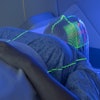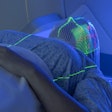Stereotactic arrhythmia radiotherapy (STAR) is safe and effective for treating high-risk patients with refractory ventricular tachycardia (VT), suggest findings presented September 30 at the American Society for Radiation Oncology (ASTRO) annual meeting in San Francisco, CA.
In her talk, Shannon Jiang, MD, from Washington University in St. Louis, MO, found that STAR led to less severe adverse events in patients compared with conventional repeat catheter ablation.
“I think our study provides some important preliminary data that supports the use of STAR as a potentially safer and equally effective treatment option,” Jiang said.
Standard VT treatment includes first-line antiarrhythmic drugs, followed by placement of a cardiac device and catheter ablation. Managing VT can be challenging due to increased risk of death, Jiang explained. Previous research suggests that high-risk patients are at a higher risk of death within one month of repeat catheter ablation and have worse overall survival.
Jiang and colleagues compared the STAR approach’s efficacy and safety profile against catheter ablation. The retrospective study included single-center data from 43 high-risk patients with refractory VT.
Of the total patients, 22 were treated with STAR and 21 were treated with catheter ablation. Compared with the standard treatment arm, the patients in the STAR cohort were older (64.5 years vs. 59 years), had higher VT risk scores (14 vs. 11), and higher risk of acute hemodynamic decompensation and mortality (18.5 vs. 17).
At one year, two patients in the STAR cohort experienced a severe adverse event compared with eight patients in the conventional treatment arm. The STAR-related adverse events included one case of pericarditis at 2.6 months and one case of pericardial effusion at 7.2 months after treatment. All events in the catheter ablation arm, meanwhile, took place within 15 days.
And while the following results did not achieve statistical significance, participants in the STAR cohort had a longer time of freedom from death, shock, or storm (FFDSS) and longer overall survival compared with patients in the catheter ablation arm.
Comparison between catheter ablation, STAR | |||
Measure | Catheter ablation | STAR | p-value |
Median FFDSS | 2.9 months | 6.9 months | 0.88 |
Median freedom from shock or storm | 9.7 months | 8.2 months | 0.95 |
Median overall survival | 12.2 | 28.2 months | 0.91 |
Five patients who underwent standard treatment died during the study period, with one patient not surviving the catheter ablation procedure. The researchers reported no deaths in the experimental cohort.
Jiang said the clustering of severe adverse events and early mortality in the catheter ablation arm “likely reflects the procedural risks of repeat ablation” in high-risk populations. She also noted that STAR and catheter ablation showed equivalent cardiac control. Jiang also called for future prospective studies to better understand STAR’s role within VT management.
In an accompanying perspective, Kenneth Rosenzweig, MD, from the Icahn School of Medicine at Mount Sinai in New York, said that while catheter ablation will remain as the primary treatment, radiation could serve as an alternative for repeat procedures.
“Clearly, the vast majority of patients are going to be well cared for by standard ablation techniques and some of the new ablation techniques coming out,” Rosenzweig said. “But there are going to be some patients who really need the help of radiation medicine to get them through. Work like this is going to help us figure out who those patients are and what we can do to really improve their quality of life.”




















